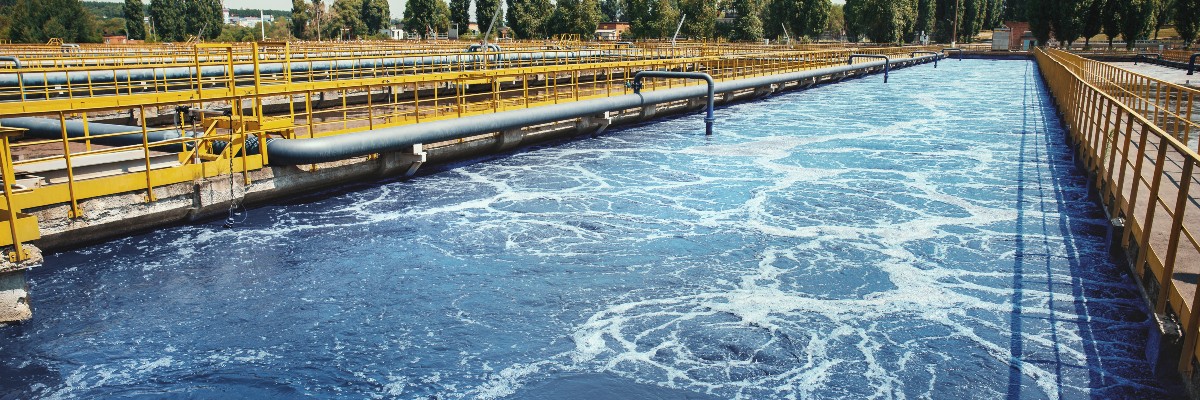Blog
Wastewater Treatment: The Moving Bed Biomass Reactor (MBBR)

One of the popular variations of the activated sludge process design is the moving bed biomass reactor (MBBR). The principal design feature is that media such as plastic cylinders are used as growth support for the biomass. In this blog, we look at the advantages and disadvantages of an MBBR system.
The moving bed biomass reactor (MBBR) design uses an aeration tank with plastic carriers that allow biofilm to grow on the surface. Like its name suggests, the media moves around the tank. The MBBR system takes up less space than activated sludge systems because it has more concentrated biomass.
The support media enables a higher amount of biomass to be retained in the aeration basin and reduces the solids loading of the secondary clarifier. The media can be employed in both aerated and anaerobic processes, although either aeration or mixing is required to slough off excess biomass.

Example of the plastic support medium
MBBR Advantages
The MBBR has various advantages as a wastewater treatment plant design. For starters, MMBR plants often require a smaller footprint compared to a conventional activated sludge (suspended growth) design.
Plus, MBBR can achieve anoxic and aerobic conditions so that processes such as organic carbon removal, biological phosphorus removal, and both nitrification and denitrification can be performed in the same tank. As biomass builds up onto the media as attached biofilm, the surface is aerobic while the underlying biomass may be anoxic.
Some biomass growth continues to occur as floc and biomass sloughing off the media tend to be larger floc particles. With sufficient agitation, the thickness of biomass on the media tends to equilibrate. The solids passing to the clarifier are much lower in concentration and tend to be larger and easier to settle. Therefore, the clarifier can be smaller and easier to operate.
The attached growth systems maintain a large amount of biomass at long sludge age. The biomass is resistant to upsets caused by toxicity and slug loading. Episodic variation in the concentration of chemicals is typically handled well with stable effluent quality.
Another benefit is that sludge production is typically lower in MBBR plants than in suspended growth systems, which can lower biomass disposal costs.
Unfortunately, MBBR systems aren’t perfect. Let’s look at some of the disadvantages of an MBBR plant design.
MBBR Disadvantages
Despite its many benefits, MBBR plants do have some disadvantages.
For example, all attached growth systems are operated at long sludge age and filaments are commonly part of the attached biomass. Occasionally, these filaments can grow in the free liquid and cause turbidity and/or foaming. When that happens, the biomass may build up to the point that little void space occurs, lowering oxygen transfer and diffusion of substrates into the biomass. Plastic media will also suffer abrasion and eventually need to be replaced.
The sizing and design of the media are crucial to a properly operating MBBR system. Too much void space decreases the surface area available for the attachment of biomass. Too little void space limits access to oxygen and substrate and may lead to clogging of the media, odor and inadequate degradation of the substrate.
The amount of media (percent of tank volume) must be specified to allow free circulation of the media with the particular aeration or mixing used in the system. Even the specific gravity of the media may be important for good operation as an accumulation of foam or fatty matter may cause the media to float and not circulate.
When specifying media, you must consider the amount and type of aeration (coarse or fine bubble) and/or mixing. Aeration and mixing cause the individual pieces to bump into each other and knock off biomass. The movement of the media also improves oxygen transfer and the diffusion of substrate. It would be best to avoid dead spots in which the media is not actively circulating.
Conclusion
Like all the other types of wastewater treatment plant designs, MBBR systems have pros and cons. But no MBBR system is exactly the same, which means you need a trusted wastewater treatment plant expert to help ensure your plant is running optimally.
Monera Technologies provides expert technical assistance to diagnose and treat the problems occurring in MBBR systems. Contact us for products and services that treat the root of your wastewater treatment problem.